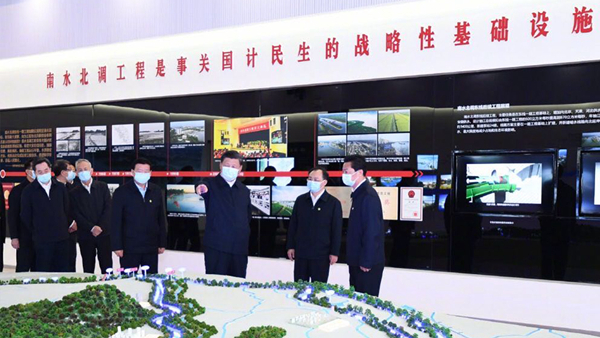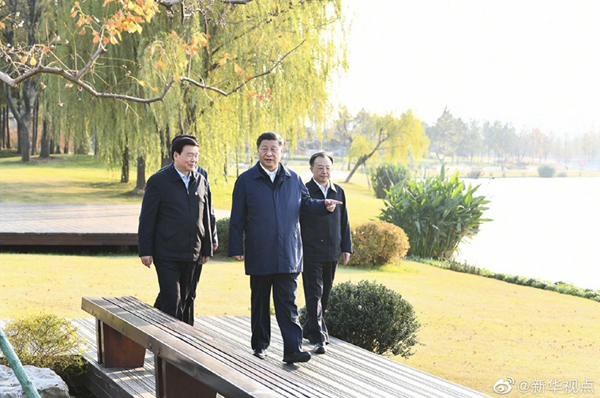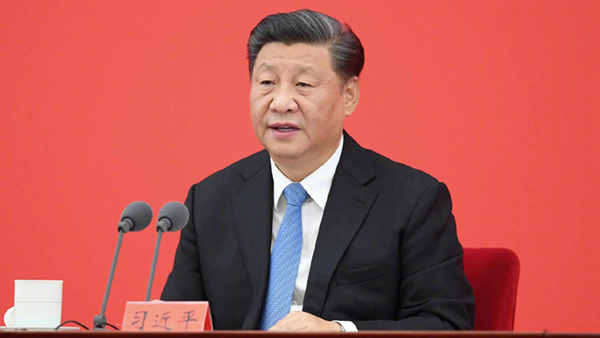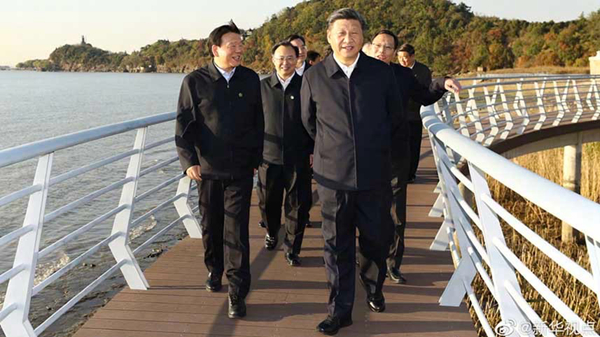


With the unveiling of a blueprint for China's development in the next 15 years, different regions are gearing up for their new roles in the country's new journey toward modernization.
Provinces and municipalities along the Yangtze River – China's longest river – have been given important roles to foster an innovation-driven, green development mode for the world's second-largest economy.
The blueprint – the Communist Party of China (CPC) Central Committee's proposals for formulating the 14th Five-Year Plan (2021-2025) for National Economic and Social Development and the Long-Range Objectives Through the Year 2035 – called for efforts to promote the development of the Yangtze River Economic Belt and the integration of the Yangtze River Delta and create innovation platforms and new growth poles in the regions.
The roles of the Yangtze River Economic Belt and the Yangtze River Delta in the country's overall development are high on the agenda of Chinese President Xi Jinping's ongoing tour in Shanghai Municipality and Jiangsu Province.
It is his first domestic inspection tour after the fifth plenary session of the 19th CPC Central Committee, at which the blueprint was adopted.

Pioneer in new reform drive
Xi, also general secretary of the CPC Central Committee, attended a grand gathering in Shanghai to celebrate the 30th anniversary of Pudong's development and opening-up on Thursday morning, encouraging the district to "carry the heaviest load" and "crack the hardest nut" in China's reform and modernization drive.
Pudong, located east of the Huangpu River in Shanghai, should strive to become a pioneer of reform and opening-up at a higher level and a vanguard in fully building a modern socialist country, he said in a speech.
The area should strengthen its role as an engine of innovation and make breakthroughs in key and core technologies, he stressed.
On the other hand, efforts should be made to improve Pudong's capabilities in global resource allocation so that it will better serve the establishment of a new development pattern, he added.
China vows to nurture a new development pattern that takes the domestic market as the mainstay while letting domestic and foreign markets boost each other. Xi called on Pudong to become a hub of the domestic market and a strategic link to the domestic and foreign markets.
The area should play a leading role in the integrated development of the Yangtze River Delta region, he said.

Environmental protection, entrepreneurship
On Thursday afternoon, Xi visited Nantong in the neighboring province of Jiangsu. He first went to Binjiang, a riverside district in Nantong, where he inspected local efforts in improving the overall environment along the shoreline of the Yangtze River, as well as the enforcement of fishing ban policies.
Binjiang, bounded by mountains along the Yangtze River, is considered a "green corridor" of Nantong. It is a significant source of water for local urban development. Several projects to restore its ecosystem have been implemented since 2016.
Recalling his tour to the area in 1978, Xi hailed the great improvement in the environment during these years.
"Such a happy life is built by your own hands and worked out by everyone together," he said.

Xi then went to Nantong Museum, where he watched exhibits introducing Zhang Jian, a Chinese industrialist and educator in the late 19th century and early 20th century.
The museum, founded by Zhang in 1905, is the first public museum founded by Chinese.
Xi learned about Zhang's deeds in developing China's domestic industries, education, and public welfare undertakings. While setting up industries, Zhang also actively started educational and public welfare undertakings that benefited villagers and had far-reaching influence.
Hailing Zhang as the sage and model of Chinese private entrepreneurs, Xi said that the museum should be built into a patriotic education base to inspire more people, especially young people.

On Friday, Xi inspected Yangzhou – the second stop of his tour in Jiangsu. He visited an ecological cultural park and Jiangdu water conservancy project to learn about local efforts in environmental improvement and cultural protection and inheritance.
He also learned about the planning and construction of the eastern route of China's south-to-north water diversion project, as well as the operation of the Jiangdu water conservancy project.
National strategies for regional integration
Along with the coordinated development of the Beijing-Tianjin-Hebei region and the building of the Guangdong-Hong Kong-Macao Greater Bay Area, the development of the Yangtze River Economic Belt and the integration of the Yangtze River Delta are important national strategies for the coordinated regional development in China.
The Yangtze River Economic Belt consists of nine provinces – Sichuan, Guizhou, Yunnan, Hubei, Hunan, Jiangxi, Anhui, Jiangsu, and Zhejiang – and two municipalities – Chongqing and Shanghai. It covers roughly one-fifth of China and has a population of 600 million, generating more than 40 percent of the country's GDP.
In 2016, China released a development plan of the economic belt that emphasized the priority of ecological conservation and green development.

When addressing the opening ceremony of the first China International Import Expo in Shanghai in November 2018, Xi announced that the country would support the integrated development of the Yangtze River Delta region. An outline of the strategy was issued by the CPC Central Committee and the State Council the following year.
The outline, mapping development for a 358,000-square kilometers expanse that encompasses Jiangsu, Zhejiang and Anhui provinces and Shanghai Municipality, said the Yangtze River Delta boasts strategic significance in the country's modernization and further opening-up, which makes its regional integration crucial for leading the country's high-quality development and building a modern economic system.
Included in both strategies, Shanghai and Jiangsu are among the most developed regions in China. Shanghai tops the GDP ranking of Chinese cities, and Jiangsu has the second-highest GDP among Chinese provinces. They are not only at the forefront of the coordinated development along the Yangtze River but also pioneers that explore China's future in a changing world.
